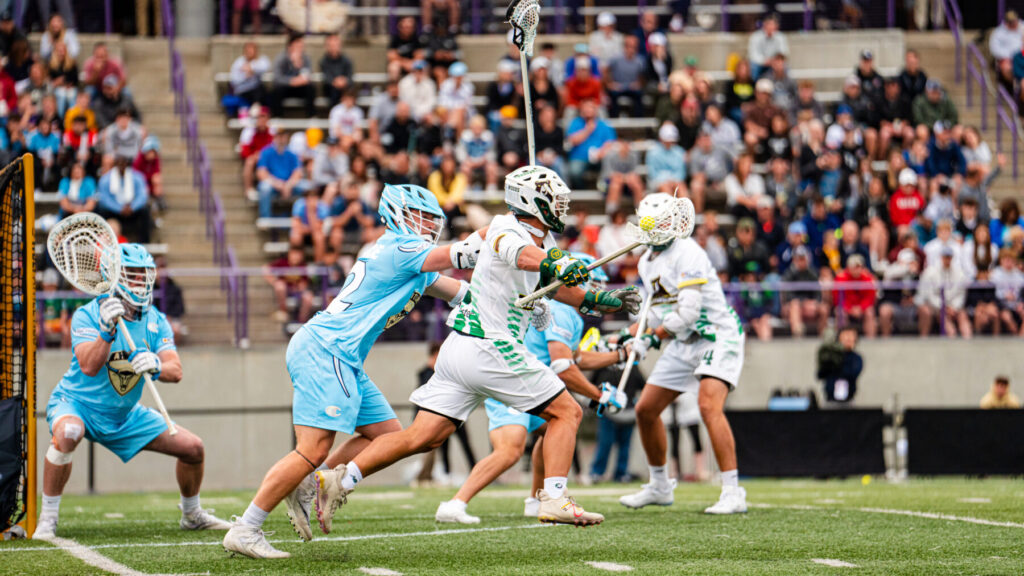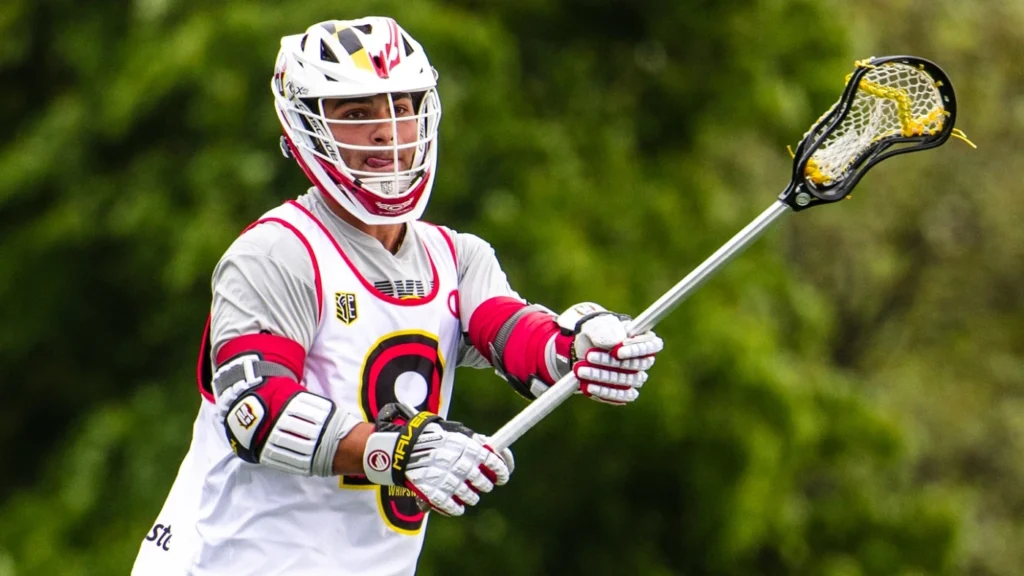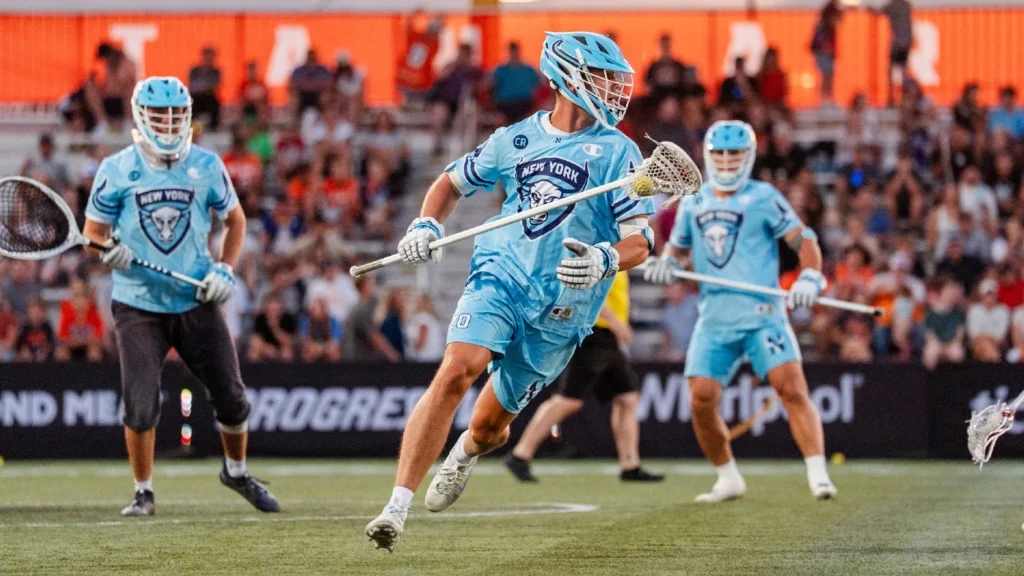
Film Study: Is The Redwoods Offense Better With 1 or 2 People on the Crease?
By Jerome Taylor
Jul 21, 2023
From the depths of Discord to in-game insights from commentators, the buzz around the Redwoods revolves around a single question - what's going wrong with their offense?
The doubts aren’t without reason, especially after what the Archer’s defense did to the ‘Woods.
As Redwoods Head Coach Nat St. Laurent put it, “You can’t score three goals in a lacrosse game and think you’re going to be okay.”
The appointment of John Grant Jr. as the offensive coordinator raised expectations for the team's offense. But so far, the results have been, well, meh.
In terms of scoring, the Redwoods offense is seventh in the league. And the limited output from the midfield has fueled a flurry of trade rumors, not just from me but Joe Keegan too.
Given the noise surrounding the Redwoods offense, it's time we take a closer look at how they’ve been performing, particularly in sets with one or two players on the crease. While the preseason plan may have suggested we’d see more double crease sets, our analysis shows how that plan has evolved as the season has progressed.
Double Crease Sets: The Salsa Dance
One critical aspect influencing the Redwoods' performance in double-crease sets is that the team is playing shorthanded due to the season-ending injury suffered by Ryan Lee in the World Games. St. Laurent and Grant Jr. constructed the current Redwoods roster with Lee’s proficiency as an inside scorer in mind.
Ideally, Lee and Wes Berg would be orchestrating an off-ball two-man game on crease, causing confusion among defenses and creating scoring opportunities for the rest of the Redwoods. But with Lee sidelined, as the saying goes, it is what it is.
With two players on the crease, the Redwoods' are shooting 23.1% (9-for-39). This figure underlines the impact of Lee's absence.
So, what does successful execution in this set look like?
At its best, the two crease players move like freestyle salsa dancers - there are some established rules, but the partner’s moves largely dictate the other’s actions and the most important thing is to stay on beat.
In the play below, as Rob Pannell carries up the left wing from X, Nakeie Montgomery, and Ryder Garnsey start their salsa. When Pannell crosses GLE, Montgomery darts from the crease to the opposite side of the field, replaced by Garnsey, who, as we've seen before, concludes the sequence spectacularly.
So that’s what it looks like when it’s working, everyone’s in rhythm, no toes are getting stepped on.
However, this level of coordination hasn't been consistent enough this season, which is one of the reasons the ‘Woods haven’t gone to this set as much as their single crease set this year.
When the rhythm is off, the result can look like this:
The issue on this play is spacing.
Wes Berg sets an off-ball pick for Charlie Bertrand, who dives toward and receives the ball from Cole Kirst. But by the time he gets it, Kirst’s, Berg’s, and his defender are all nearby, and Tim Muller forces Bertrand into a rushed semi-fadeaway shot.
Without Lee, the 'Woods are grappling with the challenge of filling his role, raising the question - is a box player necessary to replace Lee?
Not necessarily.
You don’t need to be Albert Torres to salsa, and you don’t need to have played box to be effective in double crease sets. Just look at what the Whipsnakes were able to do with Jay Carlson and John Haus in previous seasons. The real key here is having synergy with your partner.
Single Crease Sets: Open Lanes
Speaking of the Whipsnakes, it was against them this season that ‘Woods decided to make a halftime adjustment to a single crease set.
“We had two guys on the crease in the first half, and we just weren’t pleased with how they were moving, so we recommended going with one… when we fixed the spacing, we saw what we could do a little bit,” St. Laurent said after the Whipsnakes game.
So far, the Redwoods have been doing a lot with one player on the crease, going to their single crease set twice as much as the double crease set, and they’re shooting 27.8% (22-for-79) when using it.
There’s a couple of reasons for this. When Garnsey is shooting 53% unassisted this year, you want to give him room to operate.
We’ve seen Garnsey make some extraordinary plays this year, but he’s not reckless. He’s taken a calculated approach when attacking the cage. In settled situations, he’s much more aggressive when there’s one player on crease, shooting 8-for-16 in those circumstances, compared to just 1-for-4 when there’s two players on crease.
Like a guard in basketball, if there’s less resistance in the paint, they’re more inclined to attack the rim. Fewer defenders in the paint means that a guard has more options. They can drive for a layup, stop-and-pop, or draw a defender and kick out for a pass.
The same logic applies in lacrosse. If there’s fewer defenders near the crease, it opens up the lanes for more dodging and playmaking opportunities for the player dodging.
In a similar circumstance, later in this game, we see how the movement on the crease further reduces that resistance when the ball is coming from X.
In the play below, as soon as Pannell receives the ball, Wes Berg moves upfield from the crease, drawing his defender away with him, increasing the distance to complete a slide. And RP3 has more than enough speed to get through Ben Randall’s shoulders and finish.
In addition to creating more dodging opportunities, having a single player on the crease opens up passing lanes for players like Garnsey and Pannell. As you see below, following a scramble for the ball, Garnsey can find Pannell for a goal thanks to Chaos’ defense recovering to Wes Berg on the crease.
As Garnsey scoops the ball on this play, CJ Costabile starts to recover to Berg. Unfortunately for him, his two steps towards the crease provide Pannell with ample space to finish this time and room shot.
Also, pay attention to Berg's movement. He begins to fill where Garnsey starts his run, again further drawing the collapsed defenders away from Pannell.
As we move into the second half of the year, it’s apparent that the Redwoods must enhance their execution in both sets. But they face a critical choice: bring in more innate inside finishers, or stick with the existing roster hoping they elevate their performance.






